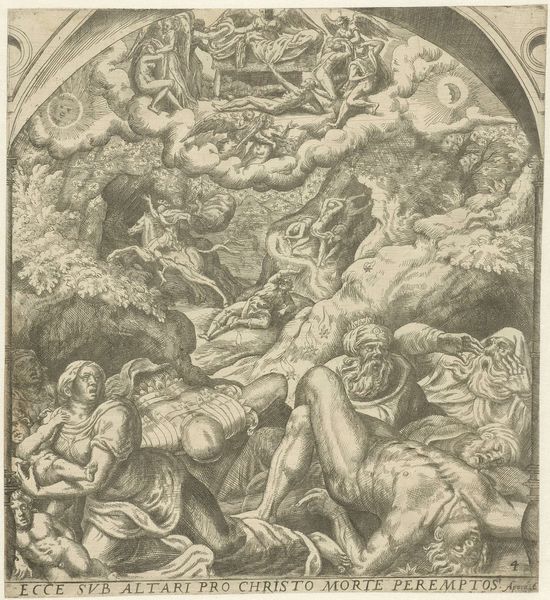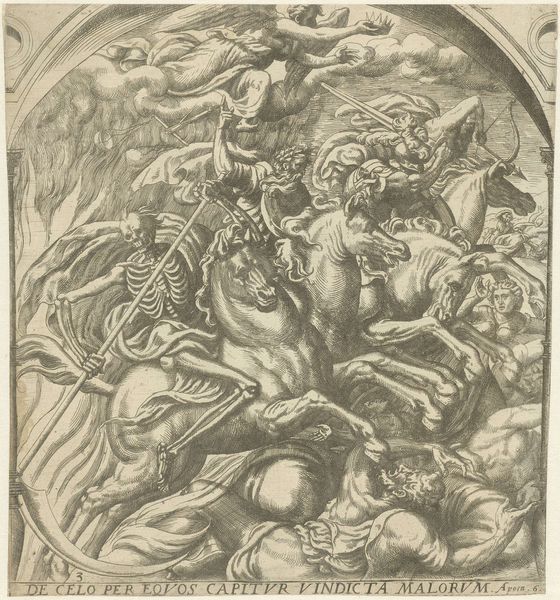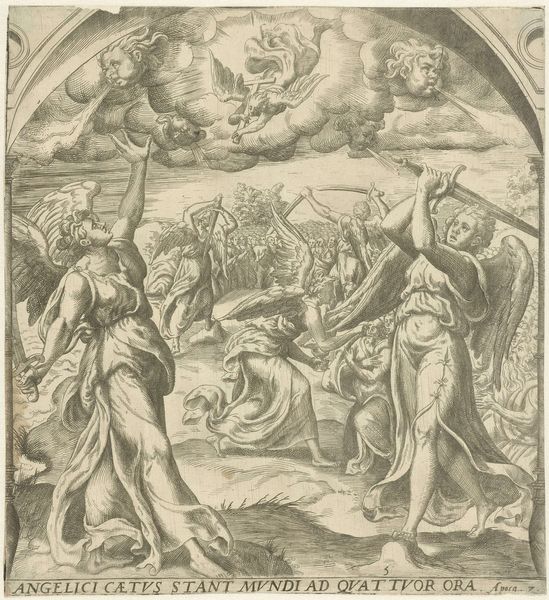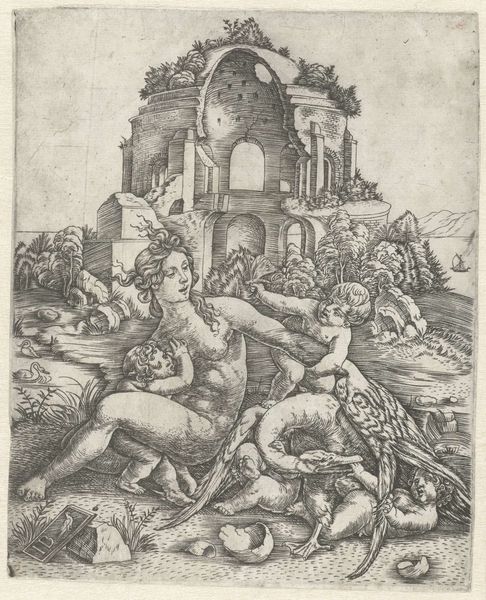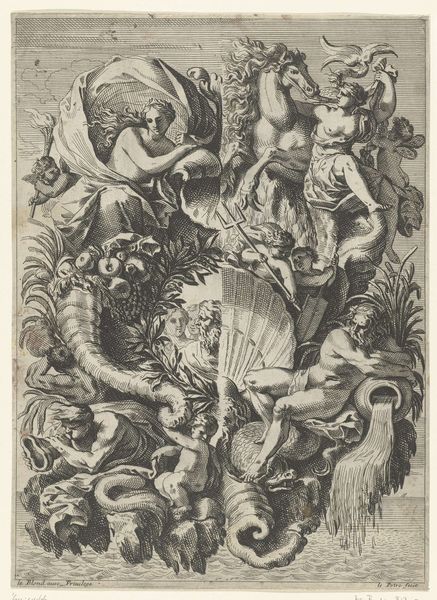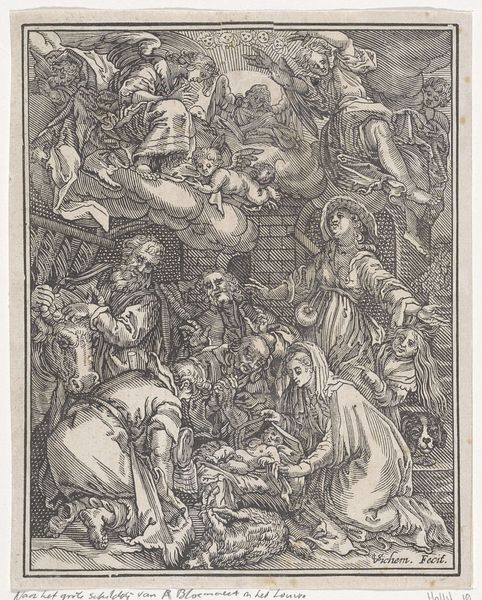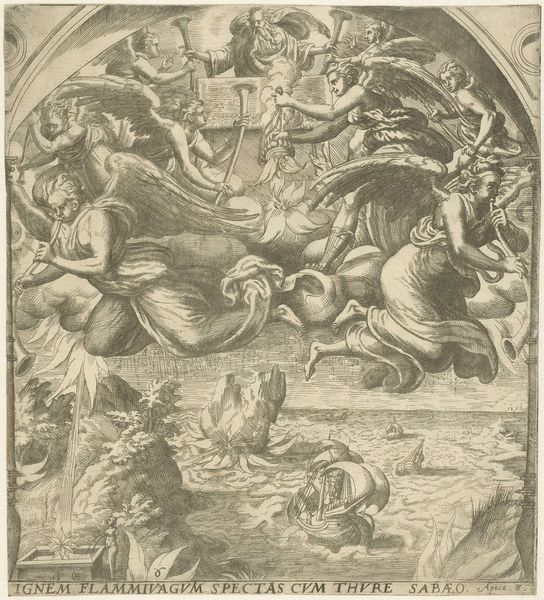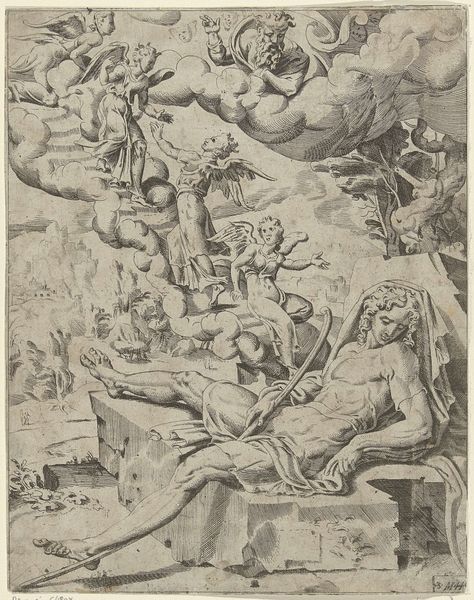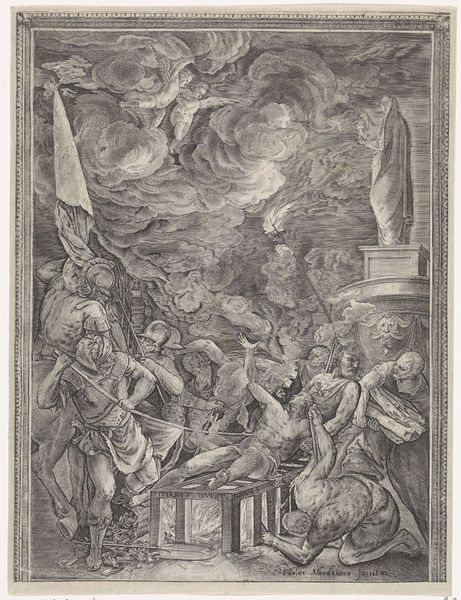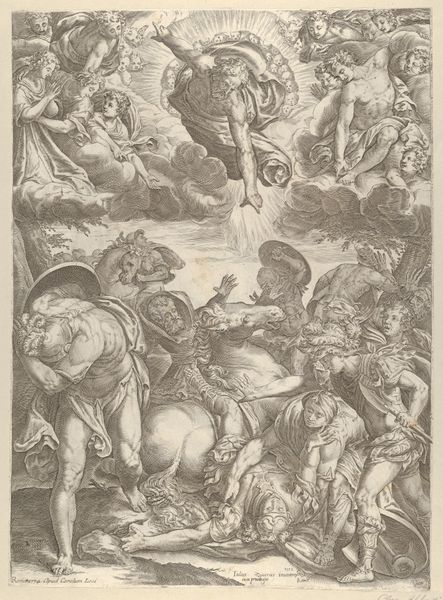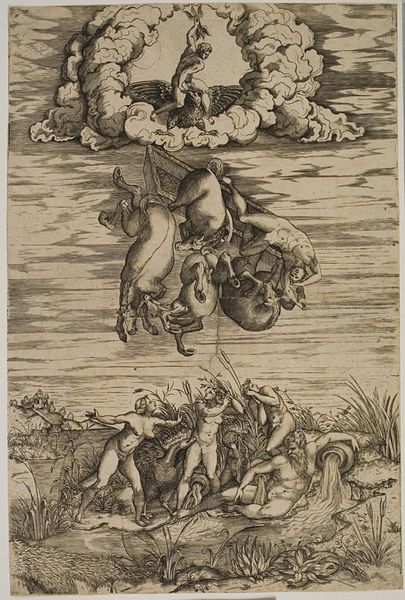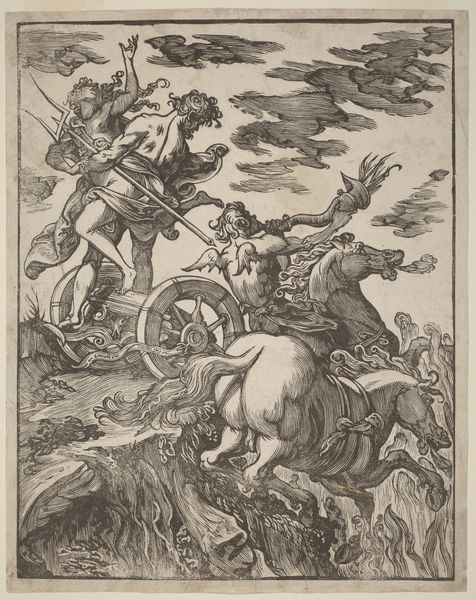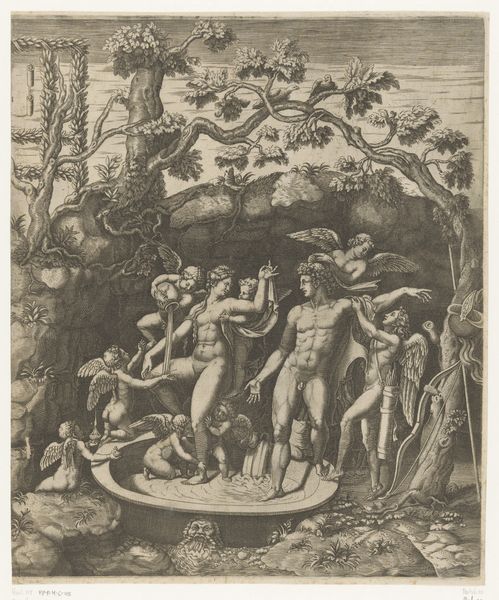
print, engraving
#
allegory
# print
#
figuration
#
history-painting
#
northern-renaissance
#
engraving
Dimensions: height 267 mm, width 246 mm
Copyright: Rijks Museum: Open Domain
Editor: This is “Sprinkhanenplaag na het vijfde bazuingeschal” - "The Plague of Locusts after the Fifth Trumpet" – an engraving by Gerard van Groeningen made sometime between 1563 and 1574. The scene is intensely chaotic, with writhing bodies and bizarre locust-like creatures filling the frame. How do you approach interpreting a piece like this? Curator: Well, let's consider the material reality of the print. This wasn’t painting for a wealthy patron; engraving allowed for relatively mass production and dissemination of images. What does it tell us that an artist chose printmaking to represent a vision of apocalyptic religious horror? Who was the audience and how did the work circulate? Editor: That’s interesting, I hadn’t thought about the choice of medium. So, the ability to reproduce it widely was significant? Curator: Precisely. Think about the labor involved - the skilled hand of the engraver meticulously carving into a metal plate, allowing this horrific vision to be replicated and consumed, likely for a moral or religious purpose, at a much wider social level. What is depicted in this scene can be viewed as directly related to the physical realities of labor and production of its time, or social anxiety around material resources and access to them. Do you notice other signs that imply that meaning? Editor: The bodies certainly seem to be struggling materially. Are they victims of this event or perhaps laborers somehow contributing to it? Curator: That’s a keen question. We see these figures intertwined with these unnatural locusts which in a modern day factory farm analogy could be said as mirroring laborers, bound by consumption, and modes of mass reproduction to its environment. Editor: I hadn’t considered the role of labor and production in understanding such a fantastical image, that shifts my perspective considerably. Thanks! Curator: Likewise. By understanding this image through a Materialist point of view, and taking its media into consideration we discover how deeply embedded material conditions are even in fantastical depictions.
Comments
No comments
Be the first to comment and join the conversation on the ultimate creative platform.
